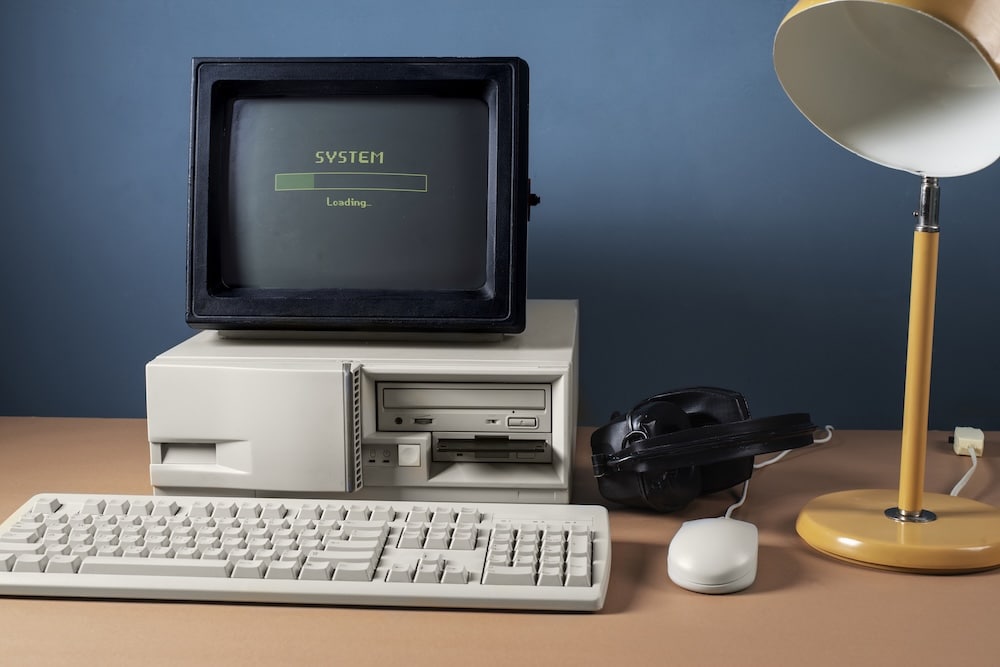
We’re technically in 2025, yet the 2030s are already knocking at the door. And for enterprise software, it’s not going to be a gentle stroll into the future, but a full-scale structural test. Over the last two decades, companies have layered system over system, glued tech stacks together with APIs and patches, and told themselves it was fine as long as it “worked.” But as we step into a world shaped by AI acceleration, geopolitical instability, stricter regulations, and changing user expectations, that duct tape won’t hold.
Enterprise software needs more than an upgrade. It needs a rebuild, and it needs it now.
The House That Legacy Built
A surprising amount of enterprise software is still running on outdated frameworks built for another era. The same core systems that launched in the early 2000s, or even before that, are still keeping things afloat in hospitals, banks, government departments, and supply chains. While there’s plenty of talk about digital transformation, in practice it often means layering shiny new interfaces over brittle cores.
The problem? That kind of transformation is skin-deep. It doesn’t prepare companies for the realities of the 2030s, real-time data, decentralized decision-making, AI-native workflows, or sustainable computing. These are expectations that go beyond tech, they’re cultural and environmental.
The Era of Composable, Not Monolithic
To survive what’s coming, enterprise software must be radically more flexible. We’re moving into a composable era, where systems are built from modular components that can evolve independently. Think Lego blocks, not concrete bunkers. This lets organizations pivot fast, scale on demand, and plug in new tools without starting over.
That’s why companies like acropolium are already thinking ahead. Their approach to architecture is based on adaptability, not permanence. They recognize that the ability to evolve, not just function, will define enterprise success in the coming decade.
The goal isn’t to build software that lasts. It’s to build software that adapts.
AI as a Core, Not a Plugin
Let’s be clear: adding ChatGPT to your dashboard isn’t an AI strategy.
By 2030, AI won’t be optional. It will be the logic behind how enterprise systems operate. That means we need to drop the bolt-on mentality. Enterprise platforms must be AI-native — built to automate, interpret context, recommend actions, and improve over time.
This can’t happen without clean, unified data. Most companies are still running siloed systems with inconsistent metadata. And that makes real AI integration nearly impossible. If AI is the engine, data is the fuel, and too many enterprises are still using sludge.
Security Is Not a Feature — It’s a Foundation
The next decade will bring deeper and more complex cyber threats. The attack surface is growing: more devices, more APIs, more integrations, more remote teams. Perimeter-based thinking is obsolete. Software must be built with zero-trust principles baked in from day one.
Security can’t be something tacked on at the end of development. It must be part of the design process. Companies that treat cybersecurity like a checkbox will be easy prey for the next wave of attackers.
And privacy? It’s not optional. Regulators, clients, and users are watching. Enterprise software must respect boundaries, limit data collection, and give users control.
UX Isn’t Just for Consumers Anymore
There’s a myth in enterprise software that usability is a luxury. That myth is dying fast. Younger workers raised on clean, intuitive apps, won’t tolerate outdated interfaces. Nor should they.
Why does it take 16 clicks to approve a purchase order? It’s 2025, yet some dashboards still look like they belong on Windows XP. Users are no longer okay with that. Enterprise tools need to offer consumer-level experiences, even when dealing with complexity.
That means contextual UX, smart workflows, and, yes, conversational interfaces. Tools should guide users, not frustrate them. Efficiency isn’t just a metric. It’s a must.
Environmental Sustainability Will Matter More Than You Think
Sustainability isn’t just a talking point anymore, it’s becoming a core requirement. Cloud computing may be invisible to most users, but it has a serious carbon cost. Enterprise systems of the future must track energy use, emissions, and the full software lifecycle.
Energy-efficient architectures, green coding practices, and transparent reporting will become real differentiators. Clients will start asking: what’s your carbon footprint per user? Can you prove it? The companies that answer, and improve, will win.
The Human Factor
One uncomfortable truth? Enterprise software is still used by humans. Humans don’t follow formulas. We act on instinct, emotion, and sometimes for reasons no KPI could explain.
So if we’re rebuilding from scratch, let’s do it with people in mind. Let’s support decision-making without replacing judgment. Let’s reduce burnout, not add to it. Empathy will matter just as much as efficiency.
We’ll need systems that work with the way people think, not force people to think like systems.
Final Thought: Less Hype, More Homework
We don’t need more buzzwords. We need better foundations.
The 2030s will reward enterprise systems that are modular, AI-native, secure, and human-aware. It’s not enough to focus on what gets built. The how is just as crucial, not because it’s fashionable, but because it’s the only way forward that lasts.
This is a rare opportunity: to rebuild trust, not just infrastructure. To design systems that don’t just solve problems, but anticipate them. And to create software that won’t need rescuing every five years.






